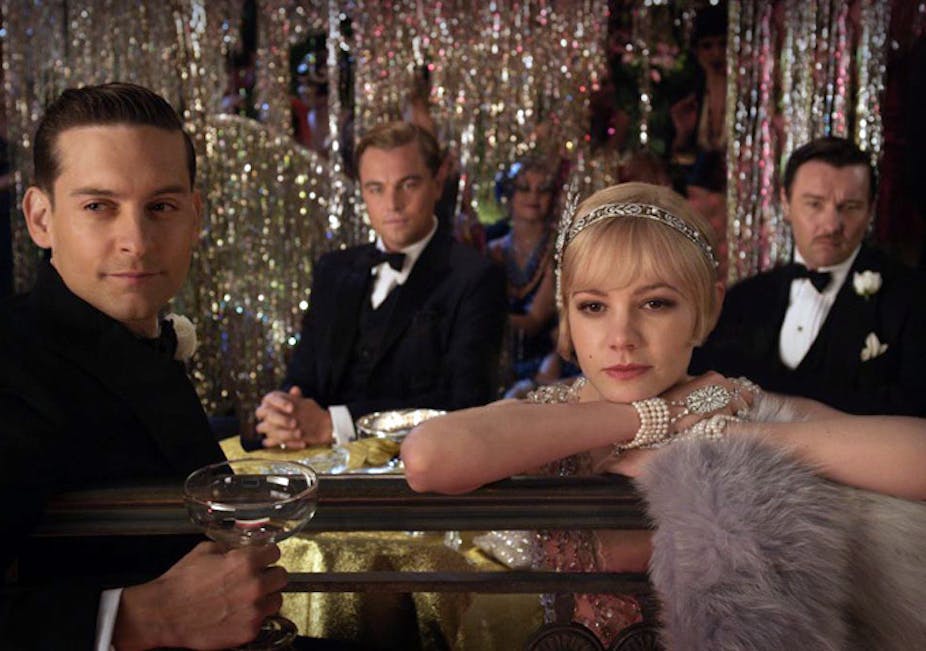It’s impossible to see a film with the hype of Baz Luhrmann’s The Great Gatsby without preconceptions.
The build-up to this film has been overwhelming with trailers splashed across screens everywhere. My Facebook feed has been awash with friends posting various songs featured on the soundtrack. One can’t leave their house without seeing the film’s leading stars on billboards or bus shelters.
The reception from film critics has been negative – mixed at best – with many feeling that director Baz Luhrmann’s desire for visual grandeur overshadows the themes of F. Scott Fitzgerald’s source material. So I went to the film’s opening night with friends expecting to write this article detailing how Luhrmann himself has ironically fashioned himself as Gatsby by creating this huge spectacle with very little substance.
The film is far more interesting and complex than many critics have given credit. There appears to be this misconception that spectacle and narrative substance can’t coexist. This was always going to be a matter of discussion given the distinct aesthetic of Luhrmann’s body of work and the themes of the book.
The film never drifts far from Fitzgerald’s novel. The author’s words are quite literally splashed across the screen. The film sees Nick Carroway arrive from the Midwest to New York in the boisterous 1920s as he takes his job as a bonds salesman and rents a house near Jay Gatsby’s mansion, where opulent parties are held drenched in jewels and champagne.
Across the bay reside Nick’s cousin Daisy and her unfaithful husband Tom Buchanan. As Nick is seduced by Gatbsy’s enigmatic personality and his raucous celebrations, we discover Gatsby’s elaborate plan to reignite his love affair with Daisy from five years earlier. As the parties subside a bitter love triangle plays out.
The Great Gatsby’s focal theme is a condemnation of this extravagance. When lifting the veil of this indulgence one finds the shallowness and emptiness of class and capital. This narrative traverses the disintegration of the American dream in a time of unbounded wealth and prosperity. Ultimately, Gatsby’s spectacle is empty and unfulfilling.
The film itself remains faithful to this theme, although not as nuanced. A distinct fissure, however, has been created between the novel’s social message and the promotions surrounding this film. Prada has held a Great Gatsby-themed party while Leonardo Di Caprio’s character is somehow a celebrated figure.
This is absurd. Gatsby parties (complete with a Jay-Z and Lana Del Ray soundtrack) shouldn’t be seen as desirable. One shouldn’t aspire to be these rotten, superficial partygoers. The very reason Gatsby throws these parties is for the unattainable goal of love and happiness. The over-hype to this film dwarves this social critique.
The use of 3D technology further confuses the message. While at times cinematically spellbinding – especially with the swooping shots of Manhattan – this pretence adds very little artistic merit and detracts from the cinematic experience. At times it felt as if the actors were hamming it up in front of a cheap green screen like a weather reporter. The 3D technology is pointless.

While the film does have its flaws, Luhrmann’s work is a testament that spectacle and narrative substance can coexist. As mentioned above, the screenplay is faithful to the book, aside from a few key moments cut from the concluding chapters. The watering down of Jordan Baker’s character was disappointing. (For me, Klipspringer phoning for his shoes at the end was one of my favourite passages. Why would you cut that out?)
The use of music is especially skillful. Given Baz’s previous efforts I was expecting a 2 ½ hour music video. Thankfully, the use of anachronistic music is carefully interwoven into the film’s narrative. The soundtrack adds an energy that is distinctly missing from previous attempts in bringing this work to the screen.
A key strength to the book is the possibility for multiple interpretations. This, the film also delivers. My friend Mikhaila thought Gatsby was an “obsessive loony” and wanted to control Daisy and keep her for himself in his mansion, while another admired him for his naive belief in a happy conclusion. Daisy Buchanan also divided my friends. While some found her to be an ostensibly weak character that didn’t have the strength to leave Tom, others found her manipulative.
This is where the strength of Baz’s film lies. While many find him to be a faux-intellectual Michael Bay, he has created a film that has made his audience talk. Creating discussions surrounding the destructive power of wealth and the reasons for infidelity is something rarely seen with contemporary blockbusters.
Hopefully, many will be seduced by the artifice-filled hype to see the film but leave with discussing something of actual substance. The box office results in the US are significant and it has already exceeded its production budget.
However, if this film remains just a piece of entertainment, it will have definitely failed as Luhrmann would have ironically become a re-imagined Gatsby. Time will only tell once those discussions start when the credits roll.

